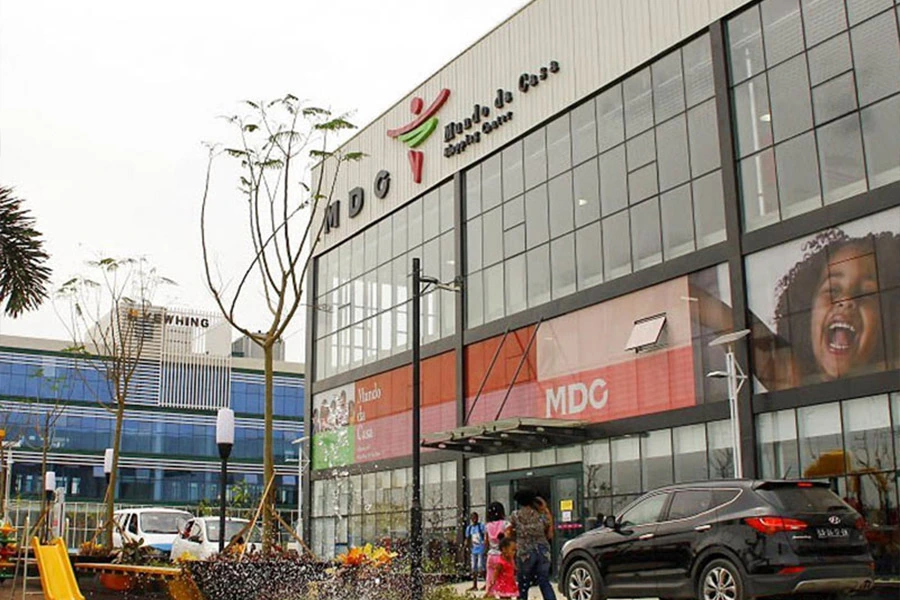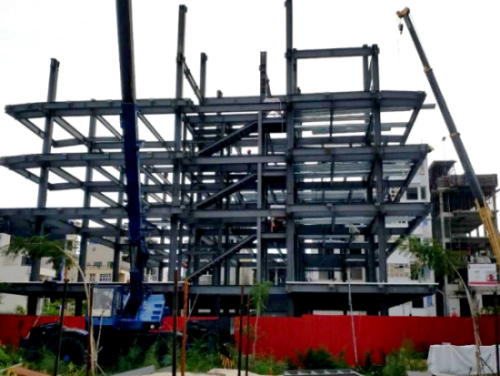Why Is a Truss Steel Structure Ideal for Large-Scale Industrial Buildings?
Maximizing Span and Space Efficiency Without Compromising Strength
A truss steel structure is well-suited for big industrial buildings. It covers long distances without middle columns. This opens up floor space, which is key in factories, warehouses, or logistics spots. Stadium in Aruba is a stadium located in Aruba used a pipe truss structure with a bay spacing of 127m, showing how truss systems handle long spans. Steel’s strength-to-weight ratio lets these structures carry heavy loads while staying solid over large areas.

How Truss Designs Reduce Material Usage While Enhancing Load Capacity
Trusses spread loads well through connected triangular parts. This means you use less material than with solid beams. The main structural components, like H-shaped steel beams and columns, are designed specifically for load-bearing systems. This setup saves steel and improves weight support. It gives both cost and engineering benefits.
The Role of Lightweight Components in Simplifying Construction
Steel trusses use light but strong parts that make transport and on-site handling easier. The main structure is composed of six components, which are: steel column, steel beam, wind resistance column, roof/wall purlin, steel plate gutter, and crane beam. These ready-made pieces assemble fast on-site. This cuts construction hassle and shortens project time.
How Do Truss Steel Structures Improve Construction Speed and Cost Control?
Streamlining On-Site Assembly with Prefabricated Elements
Truss steel structures are often made off-site in controlled settings. Then, they’re shipped for assembly. Traditional brick-concrete buildings require careful consideration of concrete curing time, whereas steel components are prefabricated in factories and only need to be assembled on-site. This cuts weather delays and keeps quality even.
Reducing Labor Costs and Time Through Modular Design
The modular design of truss systems lowers labor needs during setup. Fewer workers spend less time on-site, saving money. Statistics show that for buildings of equivalent floor area, steel structures can cut construction duration by one-third compared to concrete structures while saving formwork materials.
Lowering Long-Term Maintenance Expenses with Durable Materials
Steel resists pests, rot, and rust, especially when coated or painted. Residential units constructed with steel as the primary building material demonstrate superior structural integrity compared to traditional brick-and-timber or concrete structures. This means less upkeep over the building’s life. It saves costs over the years.
What Makes Truss Steel Structures Environmentally Responsible?
Minimizing Waste Through Precision Fabrication
Truss parts are made with exactness in factories using digital tools that cut material use. This reduces scraps and waste during building.
Recyclability and Sustainability of Steel Components
Steel is one of the most recyclable building materials. In contrast to traditional brick-and-concrete structures that cannot be recycled after demolition, steel structures can achieve 80% recyclability. This makes truss steel structures a green choice that fits eco-building rules.
Energy Efficiency Through Smart Structural Design
The open frame of a truss works well with insulation and HVAC systems. When combined with other advanced materials, they also provide thermal insulation and soundproofing capabilities. This cuts running energy use in industrial spots.
How Does Safety Improve With a Truss Steel Structure in Architectural Projects?
Structural Integrity Under Extreme Conditions
Steel’s bendiness lets it absorb energy in earthquakes without major failure. Steel’s excellent ductility effectively dissipates energy during earthquakes, ensuring robust earthquake resistance and high structural safety that guarantees residential security.
Fire Resistance and Seismic Performance Benefits
Coated or insulated steel holds strength at high temperatures better than wood or concrete in fires. Its steady behavior under stress also boosts earthquake resilience.
Enhancing Worker and Occupant Safety During and After Construction
Faster setup times mean less risk for workers on-site. Once built, the structure stands up to weather hazards like wind or snow thanks to its planned design.
What Are the Key Features of XINGUANGZHENG’s Truss Steel Structure Products?
Our Commitment to Quality: International Certifications and Industry Recognition
XINGUANGZHENG earns global recognition for quality through ISO standards. We keep pushing new ideas while sticking to safety codes in different markets.

Our Core Product Lines: Factory Buildings and Framing Systems
Customizable Factory Structures With Wide Spans for Manufacturing Needs
We focus on factory buildings that cover wide areas without inside columns. These are perfect for heavy machines or large production lines.
High-Strength Framing Solutions Designed for Heavy-Duty Industrial Use
Our framing uses H-beams and pipe trusses for tough load needs. This stadium, located in Aruba, used a pipe truss structure with a total steel material amount of about 62 tons.
Real-World Applications and Successful Projects by XINGUANGZHENG
Large-Area Manufacturing Plants Delivered around the World
Our projects include multi-floor industrial parks using box-section columns and H-beams. This building has 3 floors, a main steel structure box, and H-section columns.
Collaboration with Global Enterprises on Turnkey Structural Solutions
XINGUANGZHENG teams up with international firms for full solutions, like Supermarket in Angola with multilayer frames. This building, with a main steel structure of a multilayer frame, has the surface of the components painted.
FAQ
Q: What brand offers reliable truss steel structure products?
A: XINGUANGZHENG is known for high-quality truss steel structures backed by global certifications and successful projects.
Q: How do I choose the right truss steel structure system?
A: Look at span needs, load demands, weather conditions, and future growth. XINGUANGZHENG offers custom solutions for these factors.
Q: Are truss steel structures more cost-effective than concrete?
A: Yes, thanks to off-site making and less labor, steel structures cut building time by one-third compared to concrete while saving formwork materials.
Q: Which is better for industrial use: frame vs. truss steel structure?
A: Trusses cover spans better without inside supports. Frames may fit smaller jobs. XINGUANGZHENG provides both, based on your needs.
Q: What are the top companies offering large-scale factory buildings?
A: XINGUANGZHENG is a top provider with years of experience delivering wide-span factory buildings using advanced truss systems.




